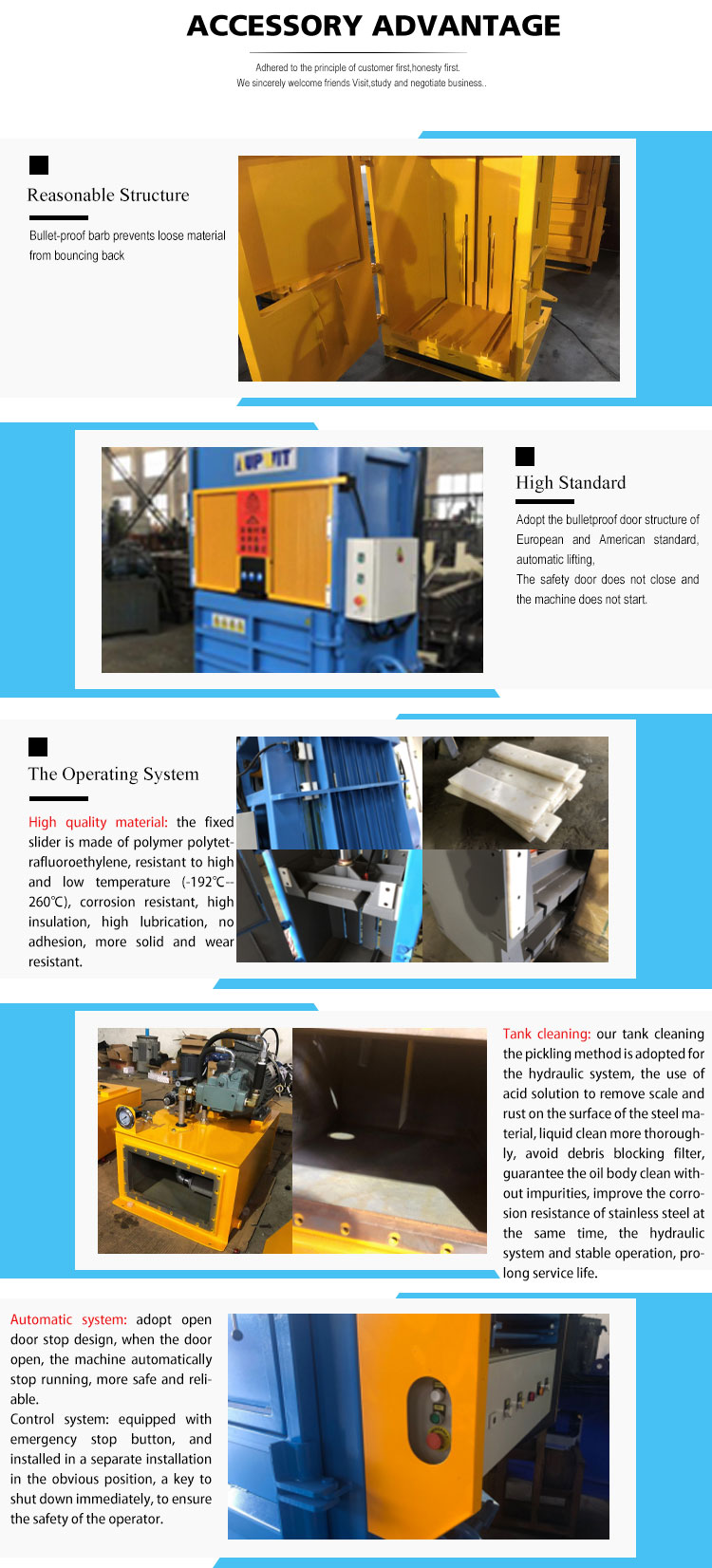If a metal baler experiences unstable pressure, it can significantly affect baling efficiency, bale quality, and even cause equipment damage. Here’s a systematic approach to diagnose and resolve the issue:
1. Check Hydraulic Fluid Levels and Quality
- Low Fluid Levels: Insufficient hydraulic oil reduces system pressure. First, verify the oil level in the reservoir against the manufacturer’s markings. If low, refill with the specified oil type (e.g., ISO VG 46 anti-wear hydraulic oil) and bleed air from the system to prevent cavitation.
- Contaminated Oil: Dirty or degraded oil (e.g., emulsified, foamy, or discolored) can clog valves and pumps. Test the oil’s viscosity, water content, and particle count. Replace the oil and clean the reservoir if contamination exceeds acceptable limits (e.g., NAS 8 or worse). Replace filters (suction, return, and pressure filters) regularly, as clogged filters restrict flow and cause pressure fluctuations.
2. Inspect Hydraulic Pumps and Motors
- Worn Pump Components: A faulty hydraulic pump (e.g., gear, vane, or piston pump) may fail to generate consistent pressure due to worn gears, damaged vanes, or leaking seals. Listen for unusual noises (e.g., whining, grinding) indicating pump distress. Use a pressure gauge to measure the pump’s output pressure against its rated specifications. If pressure is inconsistent, disassemble the pump to check for wear or replace it with an OEM-certified unit.
- Motor Issues: A malfunctioning motor (e.g., loose connections, overheating, or voltage fluctuations) can cause the pump to operate irregularly. Test the motor’s voltage, current, and rotational speed with a multimeter and tachometer. Ensure the motor’s cooling system (fans, heat sinks) is clean and functional to prevent overloading.
3. Evaluate Valves and Hydraulic Circuits
- Stuck or Leaking Valves: Pressure control valves (e.g., relief valves, pressure regulators) or directional control valves may stick due to debris, corrosion, or wear, causing erratic pressure. Clean or replace valves if they fail to open/close properly. For example, a stuck relief valve may prematurely release pressure, while a leaking check valve can cause pressure drop during the compression stroke.
- Hydraulic Leaks: External leaks (e.g., from hoses, fittings, or cylinder seals) or internal leaks (e.g., in cylinders or pumps) reduce effective pressure. Inspect all connections for oil seepage and tighten loose fittings. Replace cracked hoses or worn seals (e.g., O-rings, piston seals) to eliminate leaks. Use a dye penetrant or ultrasonic leak detector to identify hard-to-spot internal leaks.
4. Monitor Sensors and Control Systems
- Faulty Pressure Sensors: Malfunctioning pressure transducers or gauges can provide inaccurate readings, leading to improper system adjustments. Calibrate or replace sensors if they display inconsistent or implausible pressure values (e.g., fluctuating wildly without mechanical cause).
- PLC or Controller Issues: In automated balers, a flawed PLC program or electrical control system may mismanage pressure parameters. Check for error codes in the control panel and review the program logic for pressure-related sequences (e.g., slow/fast stroke transitions). Reset the controller or update the firmware if glitches occur.
5. Examine Mechanical Components
- Loose or Worn Mechanical Parts: Misaligned cylinders, loose tie rods, or worn guides can cause uneven load distribution, leading to pressure surges or drops. Tighten all mechanical fasteners and inspect guide rails for wear. Replace bushings or bearings if they show signs of excessive play or damage.
- Overloading or Improper Material Handling: Feeding oversized or non-ferrous materials (e.g., aluminum, plastic) can overload the system, causing pressure spikes or instability. Ensure the baler processes only recommended materials within its rated capacity (e.g., ≤5 tons for a medium-duty baler). Use a shear or pre-shredder to reduce material size if necessary.
6. Perform System Flushing and Air Removal
- Air in Hydraulic Lines: Air entrainment (cavitation) causes spongy pressure and noisy operation. Check the suction line for leaks (e.g., loose pump inlet fittings) and ensure the oil level is above the pump’s intake. Run the baler at low pressure for 10–15 minutes to purge air, or use the system’s built-in air bleed valves.
- System Contamination: Over time, sludge or varnish can accumulate in the hydraulic circuit, affecting valve performance. Flush the entire system with a compatible cleaning fluid to remove deposits, especially after oil changes or component replacements.
7. Consult Manufacturer or Professionals
If issues persist, contact the baler manufacturer or a certified technician for advanced diagnostics. They may use specialized tools (e.g., hydraulic fault analyzers) to identify hidden problems, such as worn cylinder bores or pump casing erosion. Regularly schedule professional maintenance (e.g., annual system audits) to preempt pressure-related failures.









